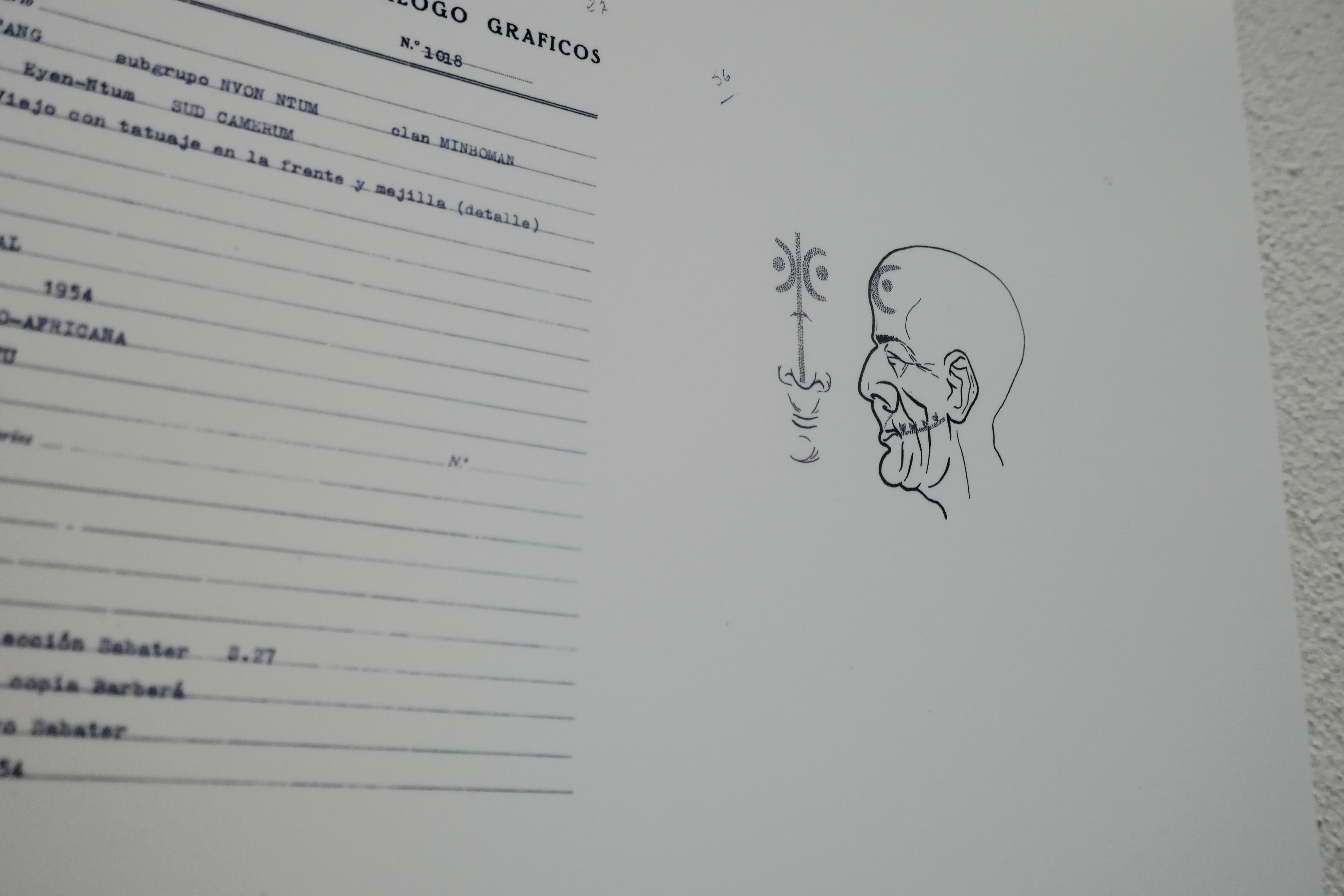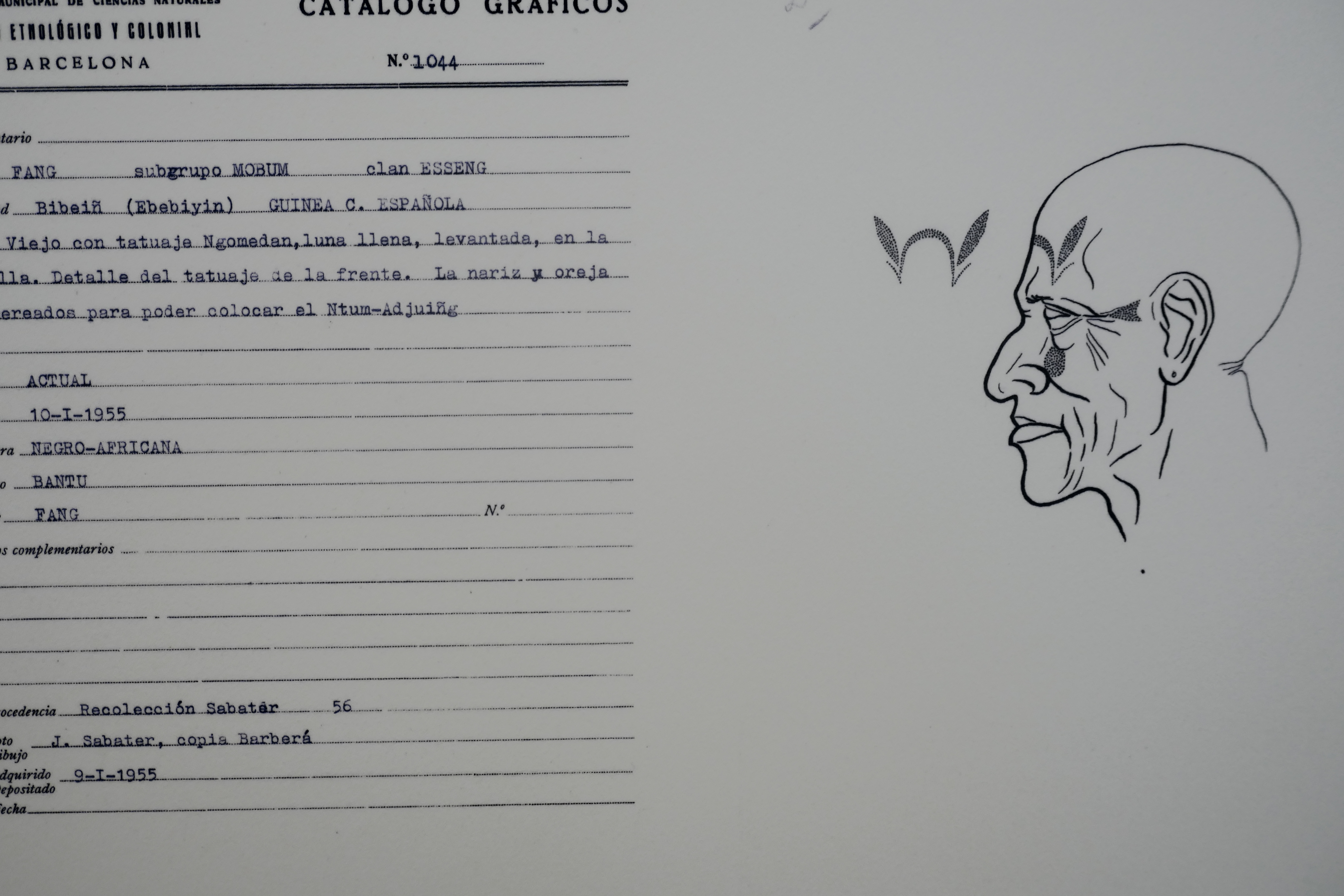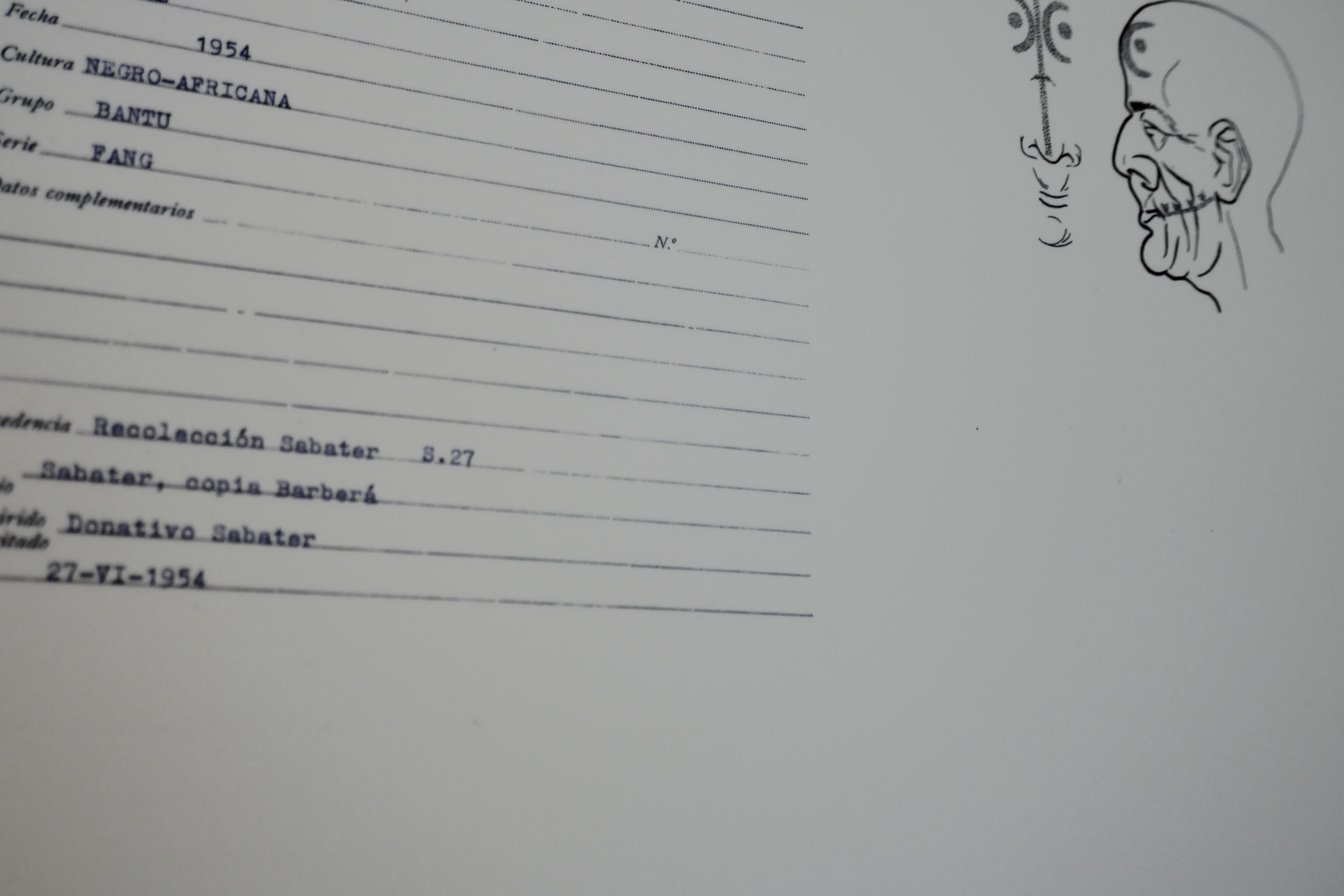
 Gabinete Fang
Gabinete FangWhat is known today as Equatorial Guinea is the result of a colonial history that began around 1777 and was shaped by treaties, attempts to purchase the territory, occupations, and violence.
Focusing on what concerns us here, different territories were unified in 1926, becoming the Spanish Guinea. In 1968, it gained independence from Spain. During Francisco Franco’s dictatorship, between 1949 and 1956, the Catalan primatologist Jordi Sabater i Pi made a series of drawings of the tattoos of the Fang ethnic group in Spanish Guinea with the purpose of producing an inventory in the Ethnological and Colonial Museum of Barcelona (known today as the Museu Etnològic i de Cultures del Món).
The description cards of these drawings – reproductions of which we exhibit here – were made in 1957 for the museum by the draftsman José Barberá Farrás, who manually redrew the originals of Sabater i Pi in the form of iconographic descriptions.
Documentary description is one of the fundamental tools of archival science, which is why we have worked in this project with a series of cards and not with the originals.
Eric Ketelaar explains in his study on the meaning of archives: “Social, cultural, political, economic and religious contexts determine the tacit narratives of an archive. One should make these contexts transparent, maybe even visible, as one tries in a museum to re-enact the context in which the artifact was made.”
This is not an installation of drawings, it is a display of archival tools that influence the final semantics of the original documents.
This decision – to select and exhibit a series of cards that are not normally on view to museum visitors – questions the current need to redescribe these documents according to their unspoken narratives and conditions of production. These are hidden behind the ethnographic and positivist aspect of this project, carried out in the midst of the Spanish colonial period and dictatorship.
Note:
This website expands on the ideas and concepts of the installation Gabinete Fang at NYU’s KJCC (2023-2024). It works by keywords that lead to fragmentary materials joined by montage.
[website]


























